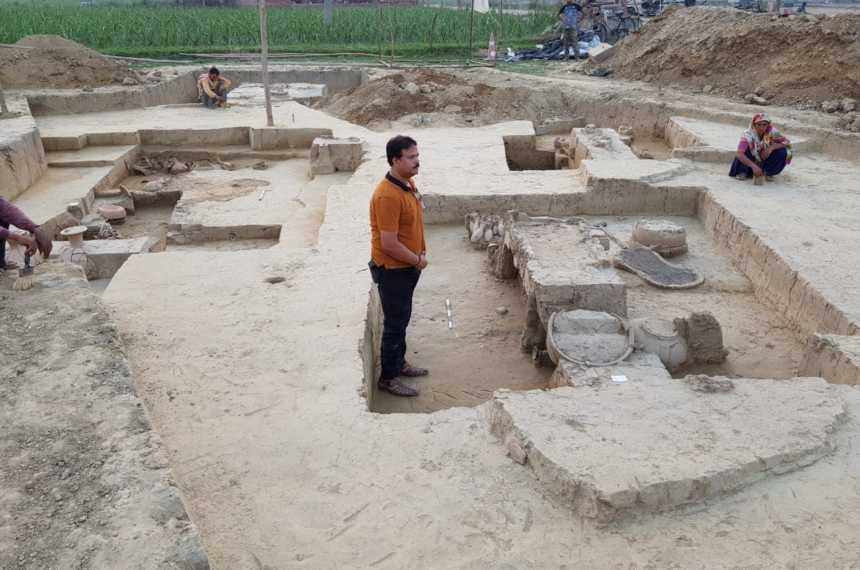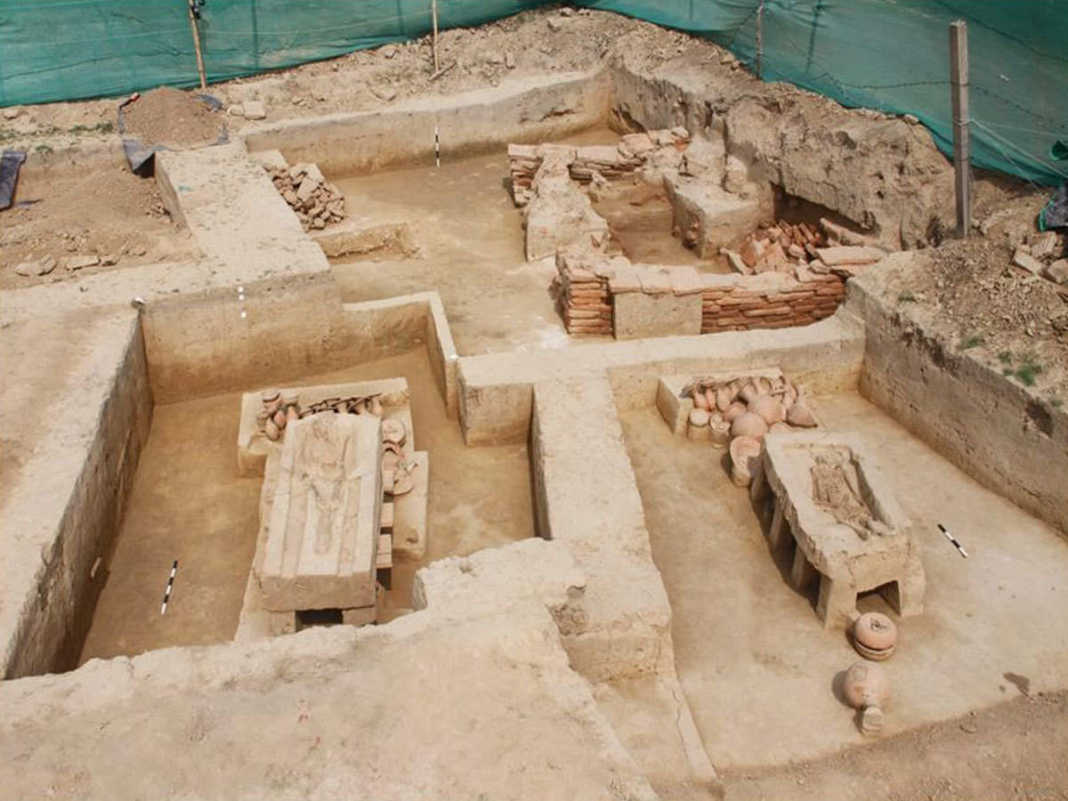Carbon dating tests have confirmed that India’s largest known necropolis in UP’s Sanauli — where 126 burials have been discovered until now — is 3,800 years old, reports Times of India.
According to the reports, the Archaeological Survey of India (ASI) had conducted excavations in Sinauli, 68 km from Delhi in UP’s Baghpat district, which had paved for the discovery of horse-drawn chariots, burials, four-legged wooden coffins, pottery, a copper antenna sword, war shields.
On further examination, the ASI has revealed that the elaborate burials, which included underground chambers, decorated legged coffins and rice in pots buried with the bodies, belong to an indigenous warrior tribe which inhabited the region.

The site was earlier excavated in the years 2003-04 and 2005-06, revealing a necropolis. The present excavations found the chariots buried with dead bodies.
The chariots discovered have two wheels fixed on an axle that was linked by a long pole to the yoke of a pair of animals. A super structure was attached to the axle consist of a platform protected by side-screens and a high dashboard. The wheels were found solid in nature, without any spokes, and studded with triangular pieces of copper.

ASI joint director S K Manjul, who led the excavations at Sanauli, said that the carbon dating has now confirmed that the burials date back to 1900 BC, making the chariots 3,800 years old.
“Between 2005 and 2006, 116 burials were found while 10 more were discovered in the last two years, making it India’s largest known necropolis,” he added.

The new discoveries, especially those of the chariots are a landmark moment since no such physical evidence has been found at a contemporary Harappan site, Manjul said.
The burial pits had legged coffins along with systematically arranged vases, bowls and pots. One of the coffins was decorated with eight anthropomorphic figures.
The burials bear similarity to Vedic rituals, said officials. “What is startling is the impressions of cloth found on bodies that suggests purification of bodies similar to what we practice in Hindu religion,” said Manjul.
A recent report submitted by the Birbal Sahni Institute of Paleosciences in Lucknow to the ASI had said that there are two C-14 (carbon dating) dates — 3815 and 3500, with a margin of error of 130 years — for the Sanauli site. It added, “Carbon dating marks this site as an earliest history of a warrior tribe in the Indian subcontinent (sic).”

While the Deccan College, Pune, and a lab in Hyderabad conducted DNA tests of the human remains, samples were also sent to the Lucknow institute. Scientific techniques such as photogrammetry and ground penetrating radar survey were used while drones and magnetometers were also deployed.
According to archaeologists, the remains may be from the later Harappan period during the Copper-Bronze age.
“The artefacts probably belong to a period between 2000-1800 BCE. It can help us determine how those people lived. It may help re-evaluate how we understood the late Harappan contemporary culture. It is a significant development in the Ganga-Yamuna doab,” Manjul told the ThePrint.


